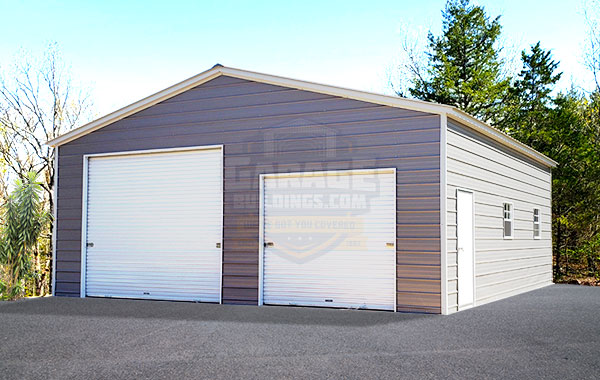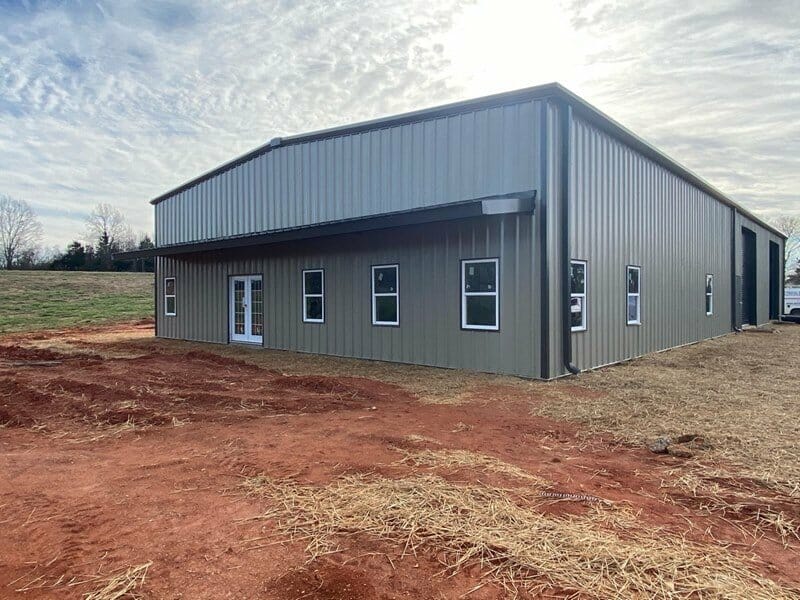Versatile Steel Buildings: Suitable for Storehouses, Workshops, and Storage Facilities
Versatile Steel Buildings: Suitable for Storehouses, Workshops, and Storage Facilities
Blog Article
Expert Overview to Steel Structure Layout: Making Best Use Of Efficiency and Long Life
In the realm of construction, the option of structure material holds vital significance in establishing the performance and durability of a structure. Steel, with its extraordinary stamina, durability, and adaptability, has become a preferred option for modern-day building design. Designers and designers are continuously discovering cutting-edge means to harness the potential of steel in creating lasting and enduring buildings. From maximizing layout factors to consider to applying economical building methods, the trip towards making the most of efficiency and longevity in steel structure design is a multifaceted one, using a mix of useful difficulties and innovative remedies that move the sector ahead.
Benefits of Steel Buildings
Steel structures supply unparalleled longevity and cost-effectiveness contrasted to typical building and construction materials. The stamina of steel gives outstanding architectural honesty, making it a favored choice for structures that require to withstand severe weather or hefty loads. Steel is very resistant to insects, mold, and fire, ensuring a longer life-span with very little upkeep needs. Furthermore, steel is a sustainable material, as it is completely recyclable and can be repurposed at the end of its helpful life.
In regards to cost-effectiveness, steel buildings are commonly a lot more affordable than frameworks made from various other products. The reliable construction process of steel buildings can lead to minimized labor prices and much shorter task timelines. Steel's toughness also translates to reduce upkeep costs over time, as there is less requirement for substitutes or repair work compared to typical building materials.
Design Considerations for Performance
Given the benefits of steel structures in terms of longevity and cost-effectiveness, it is essential to concentrate on layout considerations that optimize efficiency and longevity. When making a steel structure for optimal efficiency, elements such as the insulation, orientation, and layout need to be very carefully thought about. Reliable designs can reduce product waste during building and construction and improve the functionality of the structure. Additionally, picking the best positioning can assist take full advantage of natural light exposure, reducing the need for fabricated lights and lowering energy prices.

Moreover, integrating energy-efficient systems, such as HVAC, lighting, and renewable resource resources, can even more boost the efficiency of steel buildings. By integrating these style considerations, steel structures can achieve optimal performance and long life, offering lasting and economical solutions for numerous building projects.
Architectural Integrity and Durability

In addition, the choice of premium steel and finishes is vital for navigate to this website long life. Corrosion-resistant finishings shield versus corrosion and degeneration, prolonging the life of the framework. Normal maintenance, including evaluations for indicators of wear or damages, is also vital for determining and attending to problems before they compromise the structure's integrity. By prioritizing structural integrity in the style stage and throughout the structure's life-span, owners can guarantee their steel frameworks remain risk-free, effective, and resilient for several years ahead.
Cost-Effective Building Techniques
Effective building approaches play a critical function in handling costs without endangering the quality and honesty of steel structure tasks. One cost-efficient approach is the usage of pre-engineered steel structure systems. These systems are created off-site and afterwards put together on-site, decreasing building time and labor costs. In addition, pre-engineered steel buildings are recognized for their toughness and call for minimal maintenance, causing long-term expense financial savings.
One more economical strategy is the design-build technique, where the style and construction phases are integrated. This method promotes collaboration between the layout and building and construction teams, simplifying the process and decreasing hold-ups and cost overruns (steel buildings). By entailing all stakeholders initially, potential issues can be identified and settled early, conserving both time and cash
Additionally, embracing lasting construction practices, such as using recycled steel and integrating energy-efficient functions, can result in significant cost savings in the long run. These techniques not only reduce building waste but likewise reduced functional costs through enhanced power effectiveness. To conclude, executing affordable building methods is essential for making best use of efficiency and making certain the durability of steel building projects.
Upkeep Tips for Longevity
Proper maintenance techniques are essential for making sure the long life and structural stability of steel structures. Routine evaluations are vital to recognize any signs of rust, damage, or wear that can jeopardize the building's sturdiness. As part of a detailed upkeep plan, it is essential to without delay deal with any kind of concerns that develop to avoid them you could try here from rising and triggering a lot more comprehensive damages.

One more vital maintenance tip is to inspect the structure's welds, connections, and fasteners to ensure they are safe and in excellent condition. Any type of damaged or loose elements must be fixed or changed immediately to maintain the architectural honesty of the building. By implementing a proactive upkeep routine, steel structure owners can optimize the long life and performance of their structures.
Final Thought
Finally, steel buildings provide countless advantages such as performance, cost-effectiveness, and durability. By meticulously taking into consideration style facets, ensuring architectural stability, and making use of affordable building and construction approaches, steel structures can be optimized for maximum performance and long life. Regular upkeep is additionally essential to making sure the durability of a steel building. In general, steel structures are a reliable and long lasting option for numerous building and construction tasks.
From optimizing style factors to consider to carrying out cost-efficient see here building and construction methods, the trip in the direction of optimizing effectiveness and durability in steel building design is a multifaceted one, offering a blend of useful challenges and creative solutions that push the market forward.
Provided the benefits of steel buildings in terms of sturdiness and cost-effectiveness, it is crucial to concentrate on layout factors to consider that take full advantage of efficiency and longevity. When creating a steel structure for optimum effectiveness, factors such as the format, positioning, and insulation should be meticulously thought about. In final thought, carrying out cost-efficient construction approaches is essential for taking full advantage of efficiency and ensuring the longevity of steel structure jobs.
By thoroughly taking into consideration design facets, making certain structural integrity, and utilizing cost-effective building and construction methods, steel buildings can be enhanced for maximum efficiency and long life.
Report this page